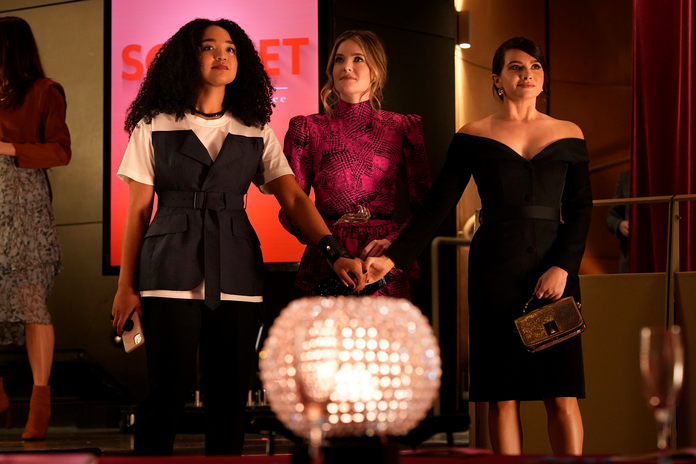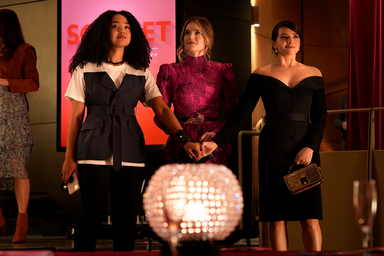Which journalism major has never thought about working at “Runway”? Spending the days running around New York holding a Starbucks cup? Or even falling in love with the one guy you weren’t supposed to because you were writing how to lose him in ten days? Television has certainly made these lifestyles (and some other stereotypes) look not only fancy and super glamorous but also easily achievable and the peak of life in journalism. However, how realistic are these portrayals?
Her Campus interviewed the Cásper Líbero alumni Mariana Nogueira, who worked at the magazines Capricho and Glamour, which are focused on the feminine world. She spoke about the reality behind the work in a newsroom and how television can often glamorize life as a journalist.
A dreamy wardrobe
If you’ve watched The Devil Wears Prada or The Bold Type you’ve probably already dreamed about being able to borrow fancy clothes anytime you want, but that’s not how things work in real life. “No one could touch the fashion collection. The fashion staff would leave things there for shootings. Sometimes, people from higher positions (inside the magazine) would take a piece of clothing, but, personally, I never took anything”.
“There was also a beauty archive with products we received and they stayed there for us to write about them. However, as a matter of fact, we barely touched it. Editors were the ones who managed it and they (the products) were important, specially in the beauty department, for shootings and testing”, explained Mariana.
Fortunately, getting gifts from brands is something that does happen. “We kept the things we got. We didn’t write about everything, brands also sent us gifts organically, they wanted to strengthen relationships with us. My editor received a lot of things but, as a reporter, I got them too. I sometimes even gave some products to my friends, especially beauty products, cause I couldn’t use everything. The fashion collection was a room and the beauty archive was a cupboard”.
The newsroom
Nogueira highlights that “the newsroom universe is very peculiar” and that fashion teams are mainly made of women, with a lot of freedom to express ideas and talk about all kinds of subjects, even those considered taboo.
The journalist also mentions the portrayal of bosses on TV can be very exaggerated and she never felt like she was in a “Miranda Priestly environment”, on the contrary, “My former bosses were always very professional and amazing to me. They gave me wonderful opportunities and I grew alongside them”. What she does say as a reality is that are little groups of people who usually work in the same area: “If you’re from a certain group, you’ll walk with a certain group of people”.
According to Mariana, the fashion magazine industry isn’t necessarily a nepotistic place, in a way that you don’t really get hired just for being related to someone who’s in charge. But, as previously mentioned, she thinks it is an industry that favors those who are a part of some sort of group or have contact with certain people. “Having network, being friends with a specific person or being well-associated is something that does make a difference for fashion magazines”.
Dating
Jane (Katie Stevens) dated Ryan (Dan Jeannotte), a columnist from the fictional magazine “Pinstripe” in The Bold Type. In The Devil Wears Prada, Andy (Anne Hathaway) has a fling with Christian Thompson (Simon Baker), who’s also a journalist, while they were in Paris. Andie (Kate Hudson) from How to Lose a Guy in 10 Days ends up falling for Ben (Matthew McConaughey), an advertiser. Outside of fiction, relationships between people from similar areas aren’t rare, but they’re not that big of a thing.
“People simply hookup. And there’s flirtation. (When working at Glamour) we were next to GQ, so when a new handsome editor arrived the girls would talk about it, so there’s a bit of that, but it wasn’t anything serious. There’s also a lot of freedom, so if you’re interested in someone, you can hook up with him/her outside of work”, says Nogueira.
Magazines and designers
Another difference in reality from movies, more precisely, from Streep’s Miranda Priestly, is how much of an influence editors and magazines actually have over designer’s ideas and creations. “It’s a big lie. I’ve never seen writers or editors dictate what a collection’s gonna look like, what will be considered fashion and what won’t.”
Nevertheless, appearing in magazines such as Vogue, Glamour and Elle still is, undoubtedly, a very important feature. “It’s like ‘You made it’. It’s a prestigious thing to be associated with international and consolidated brands such as these magazines”.
Nogueira ends the interview stating that “Movies are movies.They’re far from what is real life” and adding that, in her opinion, nowadays, the internet has changed the way newsrooms work. “Magazines are having to affiliate themselves to influencers, because deep down they’re the ones who are carrying the audience”.
—————————–
The article above was edited by Mariana do Patrocínio.
Liked this type of content? Check out Her Campus Cásper Líbero home page for more!


